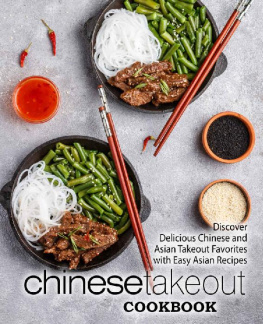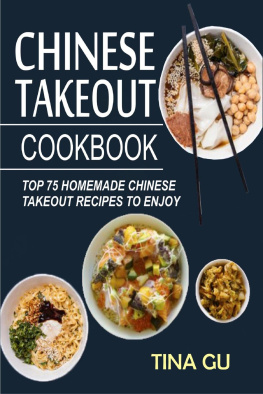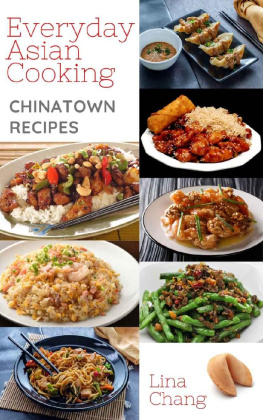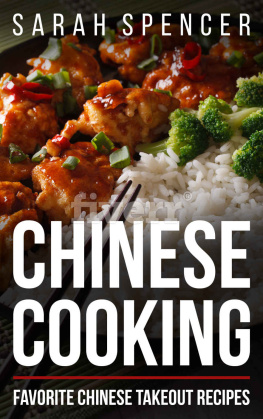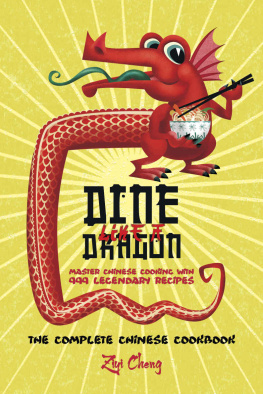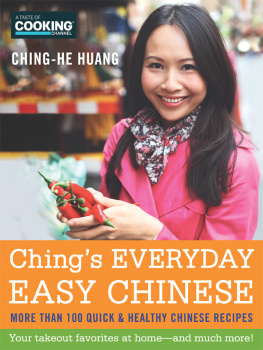Healthy Wok Chinese Cookbook for Beginners
Simple Chinese Wok Recipes for Stir-frying, Dim Sum, Steaming, and Other Restaurant Food Favorites
By Lim Chou
Table of Contents
Introduction
Are you craving some authentic Chinese flavors? Do you want to enjoy all the healthy Chinese recipes at home? Then here comes a cookbook that brings you about a hundred different Chinese recipes in one place. Healthy Wok Chinese Cookbook for Beginners is designed for anyone who loves to eat Chinese food but is not familiar with all the Chinese cooking techniques. In this cookbook, you will discover some simple and easy ways to cook traditional Chinese meals using authentic Chinese sauces and spices. The recipes are categorized according to the variety of meals offered by this cuisine, so you will get to find a range of dumpling recipes along with recipes for rice, noodles, soups, pork, beef, lamb, poultry, seafood, tofu, and appetizers.
Popular Chinese Cooking Techniques
Learning about basic Chinese cooking techniques is essential for cooking quality Chinese food at home. These cooking methods and techniques are employed in some of the most popular Chinese recipes, whether modern or traditional.
1. WOK COOKING
Chinese wok cooking is widely used today, but there are so many wok choices out there that may get confusing if you dont have a specific recipe in mind. If you are planning to buy a wok, consider the type of food and the number of servings you will cook, then select a wok with the best quality.
For wok cooking, you will have to first preheat the wok and make sure to dry it completely before adding oil. Then you can add oil into your wok in a circular motion to cover the entire base of the wok, and when you do so, make sure that the wok is only hot, not smoking. Non-stick woks can get ruined when they are heated too much.
When you are frying rice like vegetable fried rice in the wok, make sure that you are using a spatula to constantly scrape the bottom of the wok and keep it clean to prevent the bits from burning. When you see the rice sticking to the base, continue scraping the rice, and it will stop sticking to the base.
When you cook in a Cantonese wok, you can also find the sauce sticking to the woks sides, so it is important to deglaze the side using the liquid in the food and keep tossing the food to keep the food from sticking.
2. STIR-FRY
Chinese stir-frying is carried out on high heat, so if there is a conventional stove at home, then stir fry only when your wok or pan is preheated. Once the cooking pan or pot is preheated, then add the oil and other ingredients. When you add the ingredients to the pan, make sure that they are at room temperature or not cold. Cold ingredients in a Cantonese wok will make food soggy after cooking.
It is best to stir-fry in smaller batches. Cold food in large amounts will reduce the heat of the wok, which reduces the chances of getting a good flavor. It is best to precook the meats in a Cantonese wok and then add them to the stir-fry. This keeps the meat tender. When you are stir-frying, make sure to drain excess water out of the vegetables.
3. OIL VELVETING FOR STIR-FRY
This cooking technique involves searing of the poultry or meat before the actual stir-frying in hot oil for a short time, until it gets lightly brown. You will also find many recipes in this book with the same method employed for beef, pork, and poultry. The meat is then taken out, and later it is added to the actual dish. For best taste, the meat is marinated prior to the velveting. To do so, you first pour oil into a wok in a circular motion and preheat it over medium-high heat. The meat is then added to the center of the wok, where there is more oil. Then you sear this meat for ten seconds while stirring with a spatula or toss the wok. Immediately transfer this meat to a plate and later add to the rest of the dish for more cooking.
Setting Up a Pantry for Chinese Cuisine
Chinese cuisine is incomplete without the use of its special sauces and spices. Besides having a stock of meats, seafood, poultry, and vegetables, you will have to stock your kitchen cabinets with the following sauces and spices to keep yourselves ready to cook quality Chinese food at home.
Sauces
Light soy sauce
Dark soy Sauce
Mushroom-flavored dark soy sauce
Sesame oil
Red chili oil
Sichuan peppercorn oil
Rice wine
Shaoxing wine
Mirin
Oyster sauce
Fish sauce
Rice vinegar
Zhejiang vinegar
Sweet bean sauce
Hoisin sauce
Chee Hou sauce
Bean paste
Broad bean paste
Sesame paste
Thai curry paste
Fermented black beans
Duo Jiao sauce
Fermented red bean curd
Spices
Dried chili pepper
White pepper powder
Five-spice powder
Sichuan peppercorn
Star anise
Aromatics
Green onion
Garlic
Ginger
It is best to keep all the black sauce apart or make a labeling system of your own to avoid last-minute mistakes. Trust me, when you are busy cooking, it is easy to confuse a dark soy sauce with oyster sauce or a sweet chili sauce with chili sauce. I would recommend keeping the required sauce ready on your countertop before you start your wok cooking. Use the same technique to use the different similar-looking spices.
Healthy Chinese Recipes
Chapter 1: Appetizers and Dim Sum Favorites
Chinese Pearl Meatballs
Ingredients
6 dried bamboo leaves
cup glutinous rice, rinsed
1 pound ground pork
cup water chestnuts, minced
2 teaspoons ginger, minced
3 tablespoons scallions, minced
3 tablespoons cold water
2 tablespoons Shaoxing wine





